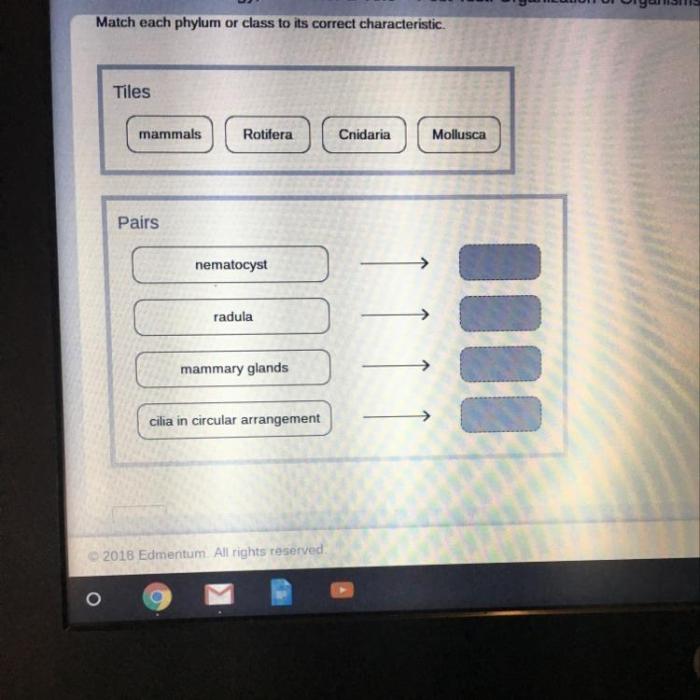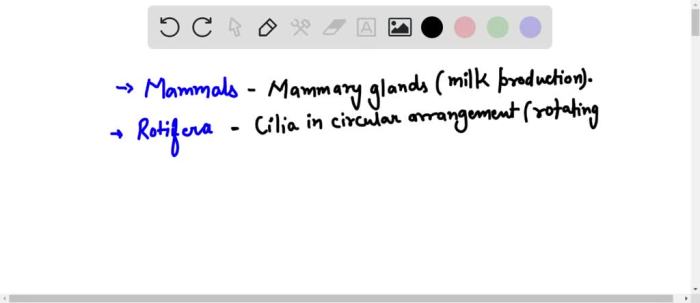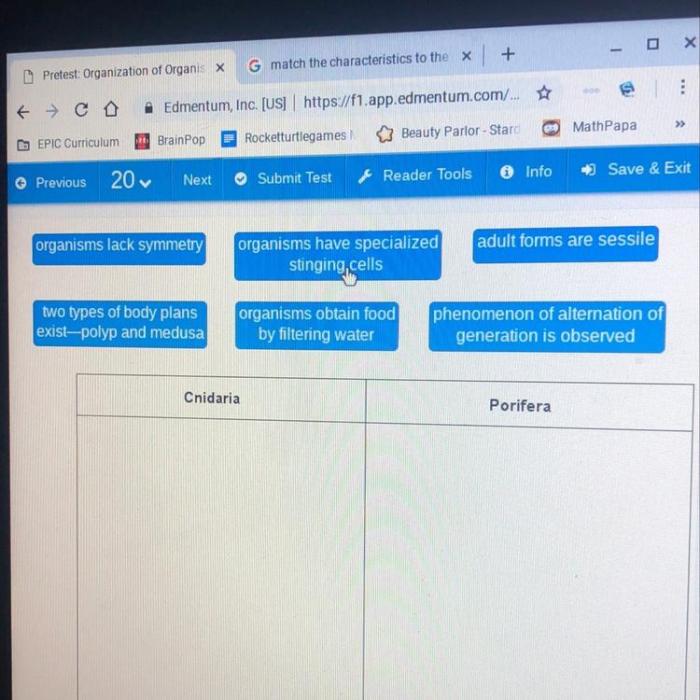Match each phylum or class to its correct characteristic. – In the realm of biological classification, understanding the relationship between phylum and class is crucial. This guide delves into the defining characteristics of various phyla and classes, providing a comprehensive overview of their distinctive features.
Through a series of tables and examples, we will explore the intricacies of phylum and class characteristics, enabling you to confidently match each phylum or class to its correct attribute.
Phylum and Class Characteristics: Match Each Phylum Or Class To Its Correct Characteristic.

In the study of biology, the classification of organisms into different groups, known as phyla and classes, is crucial for understanding their diverse characteristics and evolutionary relationships. Phyla represent major divisions within a kingdom, while classes are further subdivisions within a phylum.
Each phylum and class exhibits unique features that distinguish it from others.
Phylum Characteristics, Match each phylum or class to its correct characteristic.
The following table summarizes the key characteristics of four phyla:
| Phylum | Symmetry | Body Cavity | Germ Layers |
|---|---|---|---|
| Porifera | Asymmetrical | None | Diploblastic |
| Cnidaria | Radial | Gastrovascular cavity | Diploblastic |
| Platyhelminthes | Bilateral | Acoelomate | Triploblastic |
| Nematoda | Bilateral | Pseudocoelomate | Triploblastic |
Symmetry:Refers to the arrangement of body parts around a central axis or plane. Asymmetrical organisms lack a definite symmetrical pattern, while radial symmetry exhibits a circular arrangement of body parts around a central axis, and bilateral symmetry features a division of the body into left and right halves.
Body Cavity:The space between the body wall and the digestive tract. It can be absent (acoelomate), lined with mesoderm (pseudocoelomate), or completely lined with mesoderm (coelomate).
Germ Layers:The embryonic layers that give rise to different tissues and organs. Diploblastic organisms have two germ layers (ectoderm and endoderm), while triploblastic organisms have three germ layers (ectoderm, mesoderm, and endoderm).
Class Characteristics
The following table provides examples of classes within different phyla:
| Class | Phylum | Characteristics | Examples |
|---|---|---|---|
| Demospongiae | Porifera | Skeletons made of spongin fibers | Sponges |
| Hydrozoa | Cnidaria | Polyps and medusae present | Jellyfish, corals |
| Turbellaria | Platyhelminthes | Free-living flatworms | Planarians |
| Ascaridida | Nematoda | Parasitic roundworms | Ascaris |
Characteristics:Distinctive features that define a particular class, such as specific body structures, adaptations, or behaviors.
Matching Phylum and Class
To match a phylum or class to its correct characteristic, consider the following examples:
- Phylum:Porifera Characteristic:Asymmetrical symmetry
- Class:Hydrozoa Characteristic:Polyps and medusae present
- Phylum:Nematoda Characteristic:Pseudocoelomate body cavity
- Class:Turbellaria Characteristic:Free-living flatworms
FAQ Section
What is the significance of matching phylum and class to their characteristics?
Matching phylum and class to their characteristics is essential for understanding the evolutionary relationships between different organisms and their adaptation to diverse environments.
How can I determine the phylum or class of an organism based on its characteristics?
Refer to the tables and examples provided in this guide to compare the characteristics of different phyla and classes. By identifying the matching characteristics, you can accurately determine the phylum or class of the organism.
What are some examples of how phylum and class characteristics are used in scientific research?
Scientists use phylum and class characteristics to study the evolution of species, understand the genetic relationships between organisms, and classify newly discovered species.


